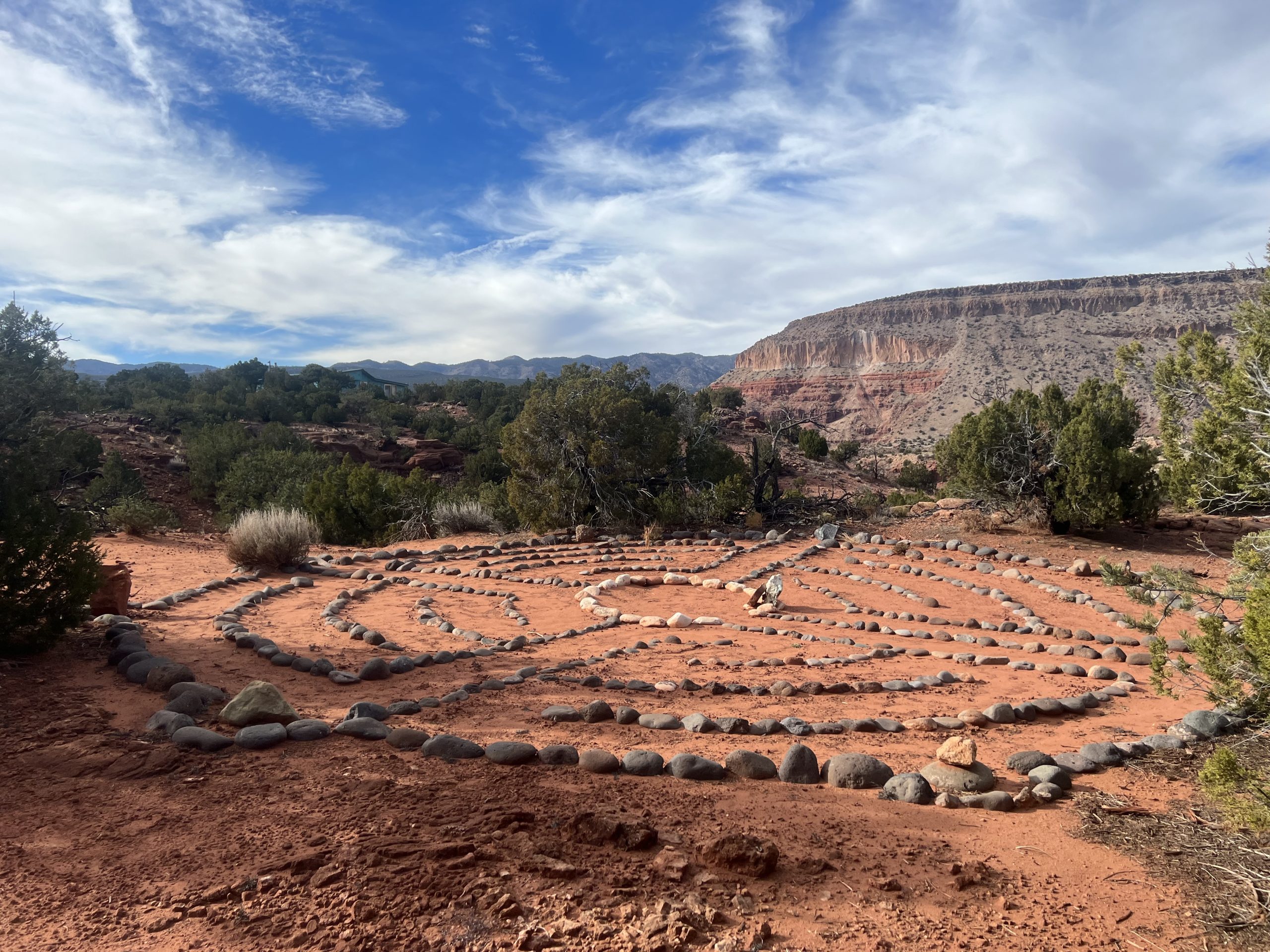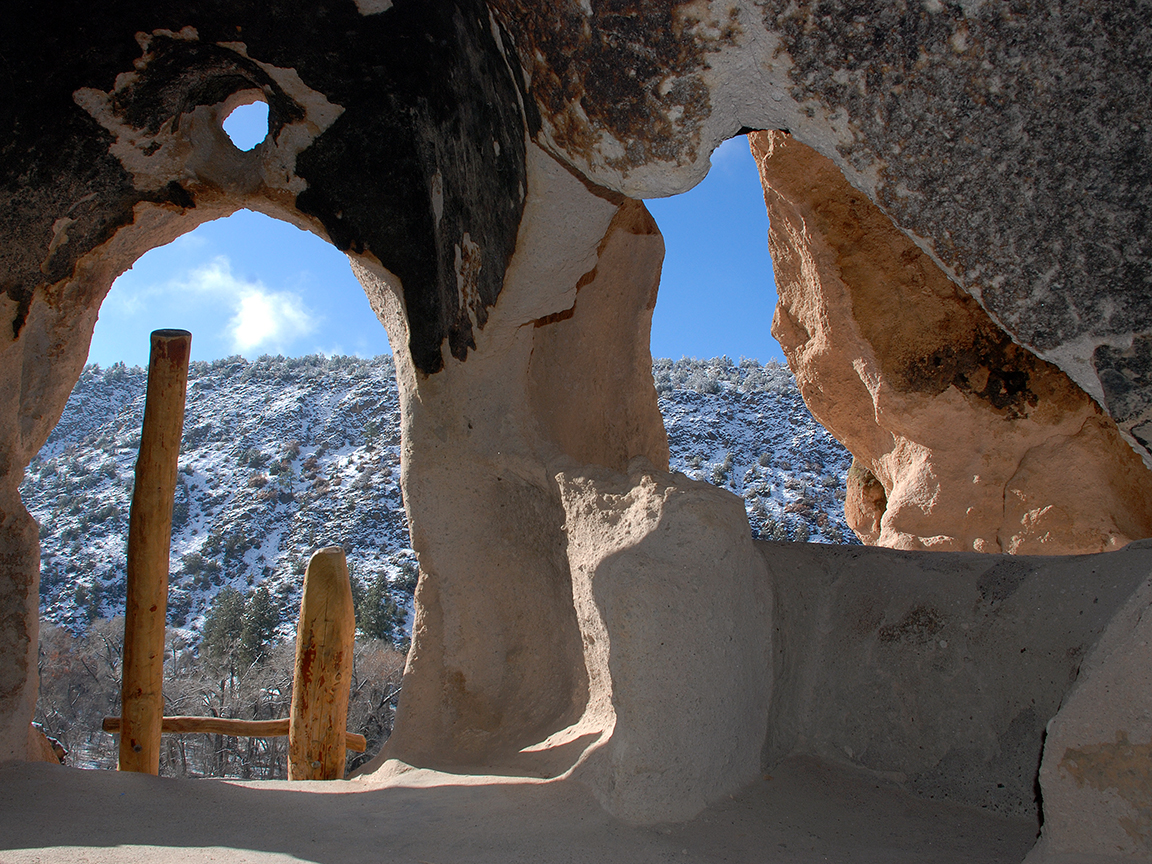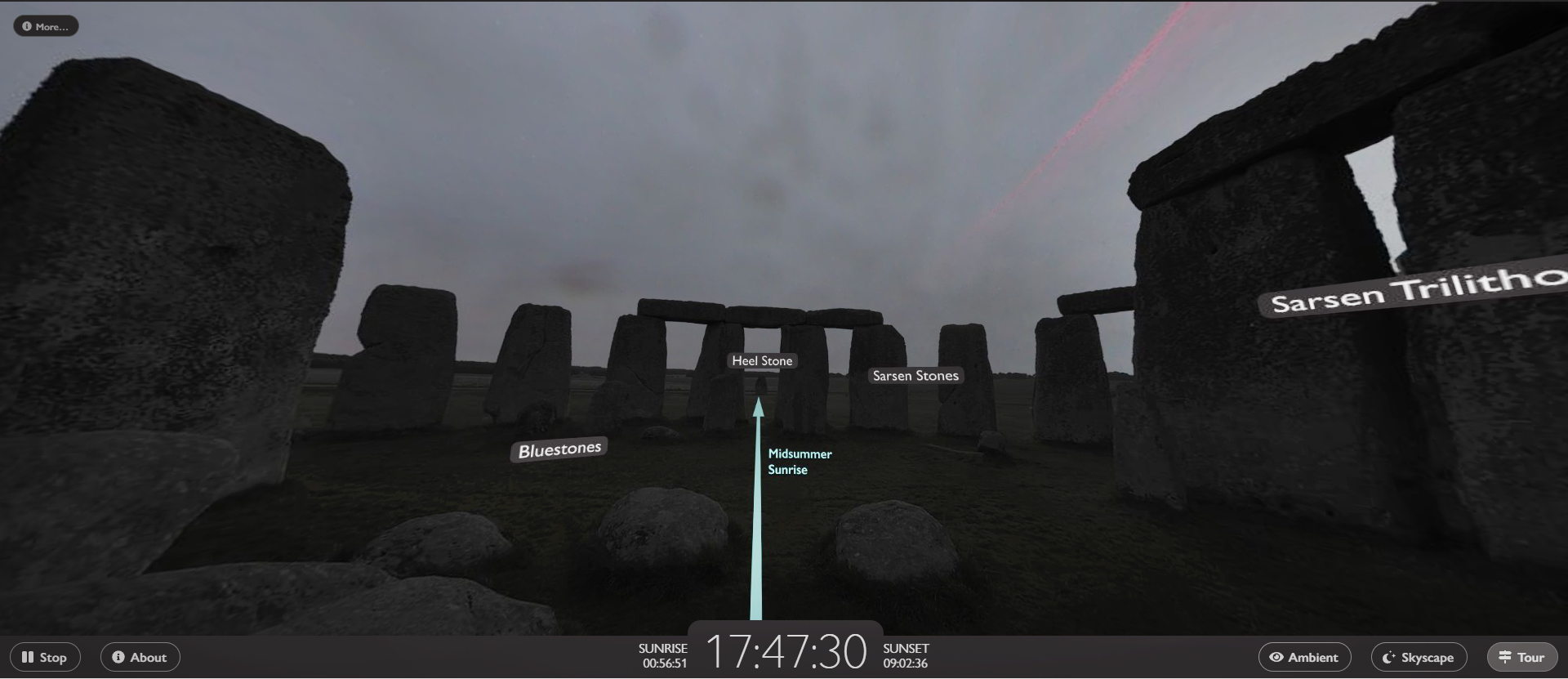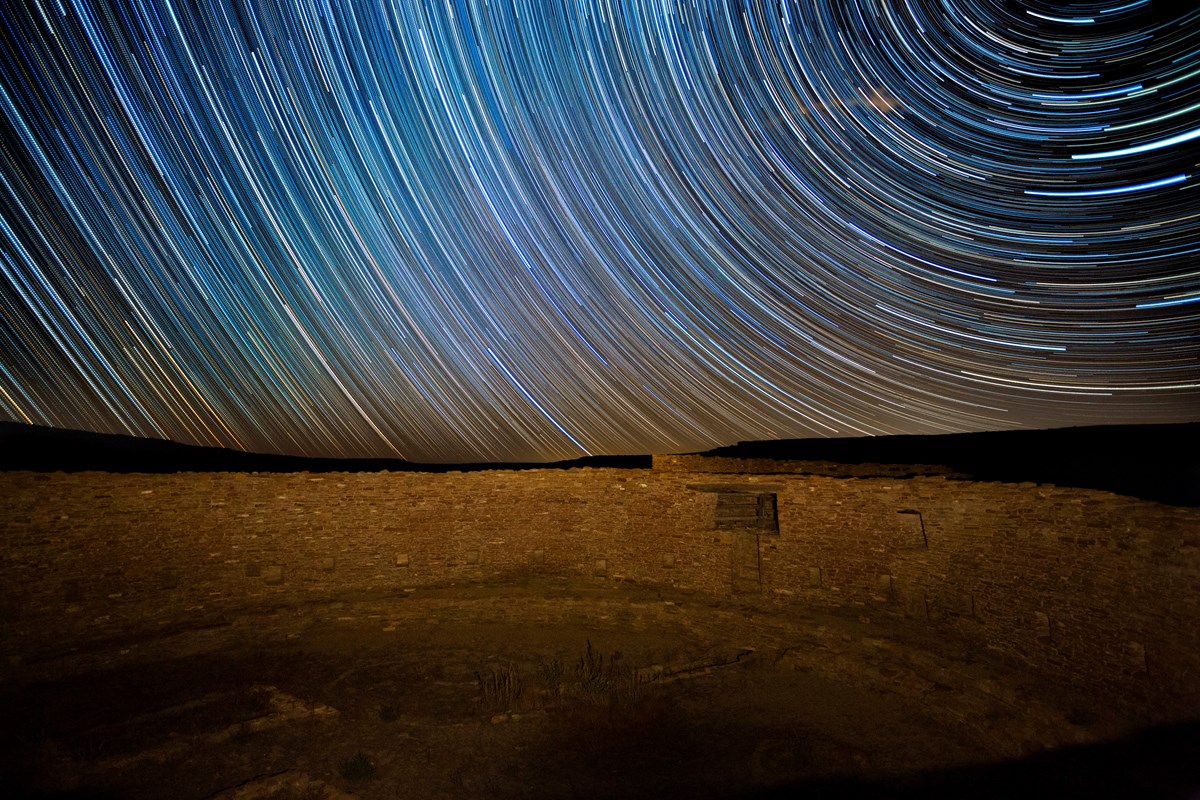North American adventurers will soon set their GPSs in the direction of New Mexico to watch the sun rise and set in the state’s barren desserts, endless landscapes offering ancient architecture aligned with the winter solstice.
A little further south, there is a large labyrinth tucked into the hillside of New Mexico’s Jemez Mountains.
The earth’s red sandstone gives way to yellowing layers of mountainsides here, carved by the weather of a million years. In this region of the state, which is represented by the Zia (or sun sign), the neighbors are an unusual lot. The land belonging to a coven of witches backs into land owned by Buddhist monks. Both tracts run parallel to land on which there is a Catholic nunnery.
On December 21, the witches, the Buddhists, and the nuns will pay observance to the winter solstice sun which will increase in its longevity every day until it peaks again on June 21, the summer solstice. But they aren’t the only ones.

A few miles away at Bandelier National Monument, sun lovers will gather at Bandelier Visitor Center just after 7:00 a.m. There, they will brave cold temperatures to walk about 400 yards to the entrance of the Village of Tyuonyi in Frijoles Canyon to watch the solstice sun make its appearance over the cliffs.
Bandelier National Monument protects more than 33,000 wilderness acres. The ancient cliffside dwellings and petroglyphs, the remnants of human existence there, date back 11,000 years when nomadic hunter-gatherers followed migrating wildlife across the mesas and canyons.
When the Ancestral Pueblo people began to build more permanent settlements, they weren’t all that different from the people occupying the Pueblos of today, where ancestral lineages run thousands of years deep and whose people still live much the same as they did before the modern amenities of electricity and running water.
Ancient architects on this Ancestral Pueblo site built the village’s entrance in alignment with the rising winter solstice sun, and on December 21, observers of the winter solstice here will see the same sky as the people who have made these hills their home for centuries. It will be the shortest day of the year, with the sun shining its brightness and warmth on the northern New Mexico desert for nine hours and 47 minutes.
Later in the day, guests to this remarkable ancient landmark will make a similar journey, this time to observe the solstice sunset markers as the sun sets below the canyon rim.

The darkened days for the ancients were a time to reflect inward, to slow down and reassess. For modern-day adventurers, it can signal a quiet time to remember where we’ve been and where we will make our next set of footprints—or tire tracks. It’s a time to observe the earth’s natural circadian rhythm, while animals burrow and hibernate beneath the frozen ground.
Bandelier’s 70 miles of hiking trails are open 365 days a year and are only closed when heavy snows move into the area. Trails vary in degree from short loops to miles of steep and rocky switchbacks. Two trails are designated for cross-country skiing. Most trails wind past the ancient sites of communal gatherings, marked with building stones and kivas, and past the cliffside dwellings built into the steep canyon walls. Ladders line the entrances, so visitors can climb up to experience the view as it was 10,000 years ago.
Three and half hours north near Farmington in northwest New Mexico, both Chaco Culture National Historic Park and Aztec Ruins National Monument also offer solstice alignment viewings. Each December 21, visitors gather to watch the sunrise at Chaco and then gather again at Aztec to watch it set.
“We can still look at the same sky that people were observing a thousand years ago. We can observe it in 2022 as they did in 1022, and I think that’s humbling for people to be so grounded and to know there are some things we can count on in this life. The movement of the sun is something we can rely on,” said Nathan Hatfield, supervisory park ranger for interpretation.
“A lot of these ancient buildings contain architectural elements that are aligned with activity in the sky, so sometimes it might just be a window that the moon is going to shine through on a certain day. In the case of Aztec West, the back wall is aligned with both the sunrise of the summer solstice and the sunset of the winter solstice. You can be standing along the back wall looking to the horizon, and you could draw a straight line and it would line up with where the sun sets on the horizon skyline.”
“Architects and builders used their architecture to create a calendar of sorts on the surface of the earth,” Hatfield said. “They weren’t just functional buildings, they actually provided a purpose for the ancestral people to mark time.”
Guests gather for a lesson in archeoastronomy and then park rangers step back and allow nature to take the wheel. Nathan calls it a bucket list item, and people come from across the world to see the northern New Mexico solar event. Some from more local regions come every year.
Chaco Culture, located in Nageezi, New Mexico, pays homage to the thousands of ancients who lived there between 850 and 1250 A.D. The park offers hiking and biking trails, evening campfire talks, and night sky programs. In fact, the park is perfect for stargazers, having been officially designated an International Dark Sky Park in 2013.

Camping in Chaco is open year-round by reservation only, but the park is remote with no commercial services so plan on bringing all of your food, water, heat, fuel, and amenities with you.
There are four backcountry hiking trails leading visitors to remote Chacoan sites, passing ancient roads, petroglyphs, stairways, and spectacular overlooks of the valley, according to the park’s website. Trails open at 7:00 a.m. and close at sunset. Permits are required and can be obtained at the visitor’s center. No overnight or dispersed camping is allowed other than in Gallo Campground.
Its sister site at Aztec Ruins National Monument was also part of the Pueblan ancestral migration journey. Located in Aztec near Farmington, New Mexico, visitors to this hallowed ground can follow in the footsteps of the thousands who came before. The 900-year-old Pueblo Great House offers more than 400 masonry rooms with original timbers still in place. So absorbing is this ancient land that the fingerprints of the masons can still be found in the mortar.
Unlike Chaco, campgrounds, accommodations, food, and gas sources abound in this area of the country, so take your pick.
“Researchers are finding more and more alignments that coincide with what was happening in the sky and the way architects and builders were using what was happening in the sky to create a calendar of sorts on the surface of the earth,” Nathan said.

* * *
A continent and an ocean away in Ireland, Celtic ancestors gathered on the winter solstice for the Gaelic “light of fire” or ”fire on the hill or high place,” so that other communal fires and clans could be observed at a distance. Pagans have observed this event for thousands of years as the symbolic death and rebirth of the sun god, who is said to gain his strength slowly over the coming months. It is said the great Celtic mythological battle of the Oak King and the Holly King takes place on the solstices. They are the personifications of winter and summer. The Oak King wins on the winter solstice, and the Holly King wins at the summer solstice.
There, at a site called Newgrange, a 5,200-year-old passage tomb located in the Boyne Valley, observers can witness the solstice in a most unusual way. Newgrange was constructed by Stone Age farmers so that the sun aligns with a passage that lights three alcoves with the solstice sun.
Designated as a World Heritage Site by UNESCO, the solstice event there lasts a blessed 17 minutes, and there is no shortage of visitors to witness the sun’s illumination of this Stone Age architectural wonder. There is no direct public access to Newgrange by road, except for mornings around the winter solstice, so if using a GPS satellite navigation system, your destination is Brú na Bóinne Visitor Centre.

One thousand years after the building of Newgrange, the Mother of all solstice viewing platforms was created—Stonehenge. Just as with the ruins of New Mexico and Newgrange, Stonehenge was built to mark the passage of time. “For the people of Stonehenge who were farmers, growing crops and tending herds of animals, knowing when the seasons were changing was important. Winter might have been a time of fear as the days grew shorter and colder. People must have longed for the return of light and warmth. Marking this yearly cycle may have been one of the reasons that Neolithic people constructed Stonehenge—a monument aligned to the movements of the sun,” notes the official Stonehenge website.
But one doesn’t have to travel far to view the sky above Stonehenge. Skyscape, a website created to enable people from around the world to experience the skies above this ancient site and to learn about the movements of the sun, is available year-round from the comfort of your own overland vehicle. Simply click here to enjoy a view of Stonehenge and its glorious sky. The central camera is pointed directly at Altar Stone, the location of which you will want to be virtually parked, to witness one of the world’s most glorious and ancient events as the solstice sun rises in the winter sky, signaling that the sun god has once again regained his strength.


